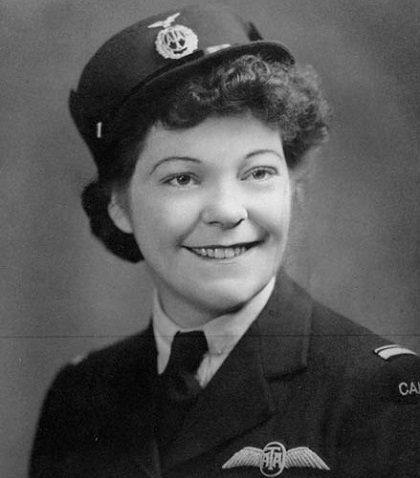The Second World War (1939-1945) - part 1

On September 1, 1939, Germany invaded Poland and the horror of the Second World War began. Britain declared war on Germany on September 3, and Canada declared war one week later. The Royal Canadian Air Force (RCAF) would play a big role in the final victory.
The RCAF served with distinction around the world, in far-flung locations that included Britain, continental Europe, Egypt, Malta, Ceylon (Sri Lanka), India and Burma. At the start of the Second World War, the RCAF had 4,061 personnel, 23 under-equipped and under-strength squadrons, and only 270 aircraft — two-thirds of which were obsolete.
By 1945, the RCAF was the fourth largest air force in the world and had supported three large missions during the war:
- The Home War Establishment of operational squadrons to defend Canada.
- The British Commonwealth Air Training Plan (BCATP) to train aircrew.
- The Overseas War Establishment to support operational missions outside Canada in Fighter Command, Bomber Command, Coastal Command and the Second Tactical Air Force.
The RCAF reached its maximum size of 215,200 personnel (including more than 15,000 members of the Women’s Division) in January 1944. About 249,600 men and women served in the RCAF during the war; 17,034 personnel died on operations, in training or while prisoners of war, including 28 women and 1,066 groundcrew.
- Fighter Command (1936–1943)
-
Fighter Command (1936–1943) was formed to allow more specialized control of fighter aircraft. The Command thwarted Hitler’s plan to invade Great Britain in 1940 and then took the air war to the skies over Europe to gain air superiority.
In 1943, Fighter Command’s responsibilities were divided between Air Defence Great Britain (for domestic defence) and the Royal Air Force (RAF) Second Tactical Air Force (the offensive force). (The ADGB reverted to the name Fighter Command in 1944.) Canadian squadrons flying with Second Tactical Air Force fought in the North African campaign and participated in the D-Day invasion.
- Transport Command (1943–1967)
-
Transport Command (1943–1967) came into being when Ferry Command, which had been formed in 1941, was renamed. Ferry Command was primarily responsible for moving aircraft from factories in North America to operational units. With the new designation, the command took on increased and more widely ranging responsibilities.
The RCAF contributed personnel to Transport Command, although it did not form its own transport squadrons overseas until the late summer of 1944 when three RCAF squadrons, flying Dakotas, were established overseas. These squadrons were disbanded by 1946; the airmen who served with them later became the backbone of Canada’s Air Transport Command.
The RAF’s Transport Command was renamed Air Support Command in 1967.
- Coastal Command (1936–1969)
-
Coastal Command (1936–1969) carried out the campaign against enemy U-Boats (submarines), merchant ships and warships. Coastal Command aircraft escorted convoys sailing from North America to Britain, and searched the seas from Iceland to Gibraltar. Seven RCAF squadrons flew with Coastal Command.
Coastal Command destroyed more than one-quarter of all German U-Boats during the war:
212 out of 800. RCAF squadrons in Coastal Command and in Canada accounted for 19, while
RCAF crews serving in RAF squadrons were involved in many more “kills” in the North Atlantic.
Although Coastal Command was drastically reduced following the end of the Second World War, it continued as an active RAF organization until the 1960s.
- Bomber Command (1939 –1945)
-
Bomber Command (1939 –1945) was the only RAF Command with an all-RCAF group. No. 6 (RCAF) Group was activated on January 1, 1943. Initially, it comprised eight squadrons but eventually grew to 14. Another RCAF bomber squadron, 405 “Vancouver” Squadron, was permanently assigned to No. 8 Group, the Pathfinder Force.
One third of Bomber Command aircrew were Canadians and about 10,000 Canadians lost their lives. The command suffered an extraordinarily high casualty rate, with a death rate of about 44 per cent. However, No. 6 Group had the lowest loss rate of any Bomber Command groups.
The bombing campaign destroyed German air defences and industry, disrupted transportation, diverted personnel and materiel from other theatres of the war and damaged German morale, thus paving the way for the Allied invasion.
In his private diary, propaganda minister Joseph Goebbels wrote that “the people west of the Rhine… have been demoralized by the continuous enemy air raids and are now throwing themselves into the arms of the Anglo-Americans”.
DID YOU KNOW...

Marion Orr, a Canadian aviation pioneer, worked for the BCATP and the Air Transport Auxiliary. Photo: LAC
It was difficult for women to work as professional pilots until the Second World War. During the war, 166 female pilots from many nations, including Canada, worked for Britain’s Air Transport auxiliary delivering aircraft, as well as carrying freight and passengers.
Report a problem or mistake on this page
- Date modified: